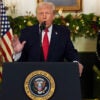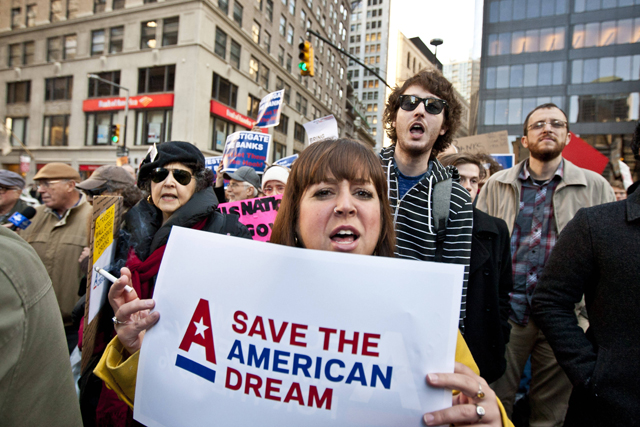News that two major labor unions will co-opt an “Occupy” protest in Washington next month solidifies two facts about the waning protest movement: it is an entirely ordinary function of left-wing activism, and it is wholly unserious about addressing special interests’ influence over the political process.
The Washington Post reports that the Service Employees International Union and the Communications Workers of America will stage a protest at the Capitol next month in conjunction with occupiers. The protest’s stated goal, according to SEIU president Mary Kay Henry: to intimidate Republicans into backing the president’s economic agenda.
The Occupy protests, in other words, will be co-opted by a pair of unions looking to leverage populist anger in their push for a generic left-wing agenda – more “stimulus” spending, higher taxes, no entitlement reform, and an ever-increasing national debt. Occupiers nationwide initially touted their non-partisan credentials. “Occupy Congress,” as the forthcoming protest is to be titled, should put that claim to rest.
Likewise, collaboration with some of the nation’s largest labor unions undercuts protestors’ incessant claims that their chief grievance is special interests’ undue influence on the political process. Indeed, the SEIU is the fifth largest political contributor of any third party group since 1989, according to the Center for Responsive Politics, having doled out more than $37 million to political candidates, parties, and organizations. Five of the top 10 groups in terms of political contributions are unions.
But direct contributions are only the tip of the iceberg for union political activities. In the past two election cycles, American labor unions reported an astounding $2.2 billion in political expenditures, according to the National Institute for Labor Relations Research. The SEIU spent more than $55 million on political activities in 2010 alone. The American Federation of State, County, and Municipal Employees, which is also supporting the Occupy protests, was the year’s most politically active union in terms of expenditures, with more than $66 million going to its political activities.
Big Labor is also taking full advantage of new campaign finance freedoms recognized by occupiers’ most vilified Supreme Court decision, Citizens United vs. FEC. “Labor unions are seizing on last year’s landmark Supreme Court campaign finance ruling to change how they engage in politics,” the New York Times reported in September.
Chief among labor groups leveraging the freer campaign finance environment is the AFL-CIO, which has also been among the most supportive of the Occupy protests. The union’s policy director said the protestors had “given voice to something very basic about what’s going on in our country right now…The fact that they’ve figured out certain concepts and language for doing that, we think is really important and positive.”
Scribe reported that the AFL-CIO was using ad dollars to support the protests, but that hasn’t been the full extent of their support. They’ve invited Occupy DC protestors to their headquarters to shower, and given food and blankets to the occupants of the tent city in McPhereson Square, according to the Washington Examiner.
A host of internationals – both AFL-CIO and Change to Win-affiliated – have also thrown their support behind the Occupy protests, in word or deed. Those include the United Auto Workers, Teamsters, United Steelworkers, Transportation Workers, Industrial Workers, National United Nurses, and Laborers’ International. With AFSCME, the SEIU, and the CWA, those account for some of the largest and most politically active labor unions in the nation.
Unions have long been the political shock troops for the Democratic Party, providing millions in political contributions and invaluable election-day support. The nexus between big government liberals and labor unions is a textbook case of cronyism, as Heritage’s James Sherk has explained. The increase in the share of unionized workers employed by the government – now a majority of all union members – creates perverse political incentives:
Labor unions’ political activism creates a conflict of interest in government. In the private sector, employer pressure to cut costs balances excessive union wage demands. In the government, unions can use their political influence to elect sympathetic politicians, and then labor and management work together to raise government pay. No one at the bargaining table speaks for the taxpayers.
But even in the private sector, unions have an overt political agenda, and they use their immense political muscle to enact it. That was ostensibly the trend that the Occupy protests were created to fight. But as more unions back the protestors, it becomes clearer that they are just fine with political insiderism, as long as the insiders are pushing the right (read: liberal) policies.

































11 Replies to “‘Occupy Wall Street’ Steadily Becoming Just Another Big Labor Protest”